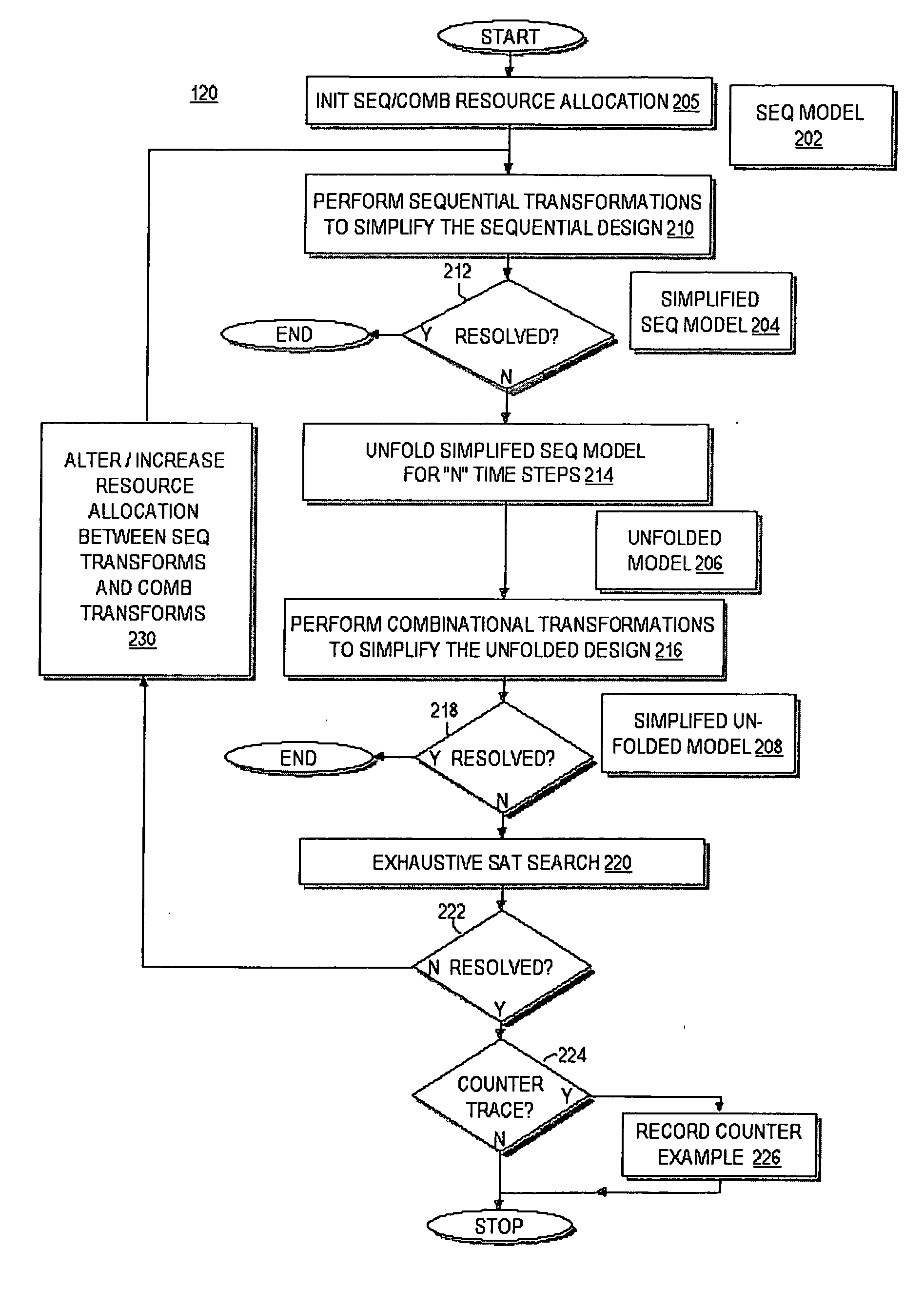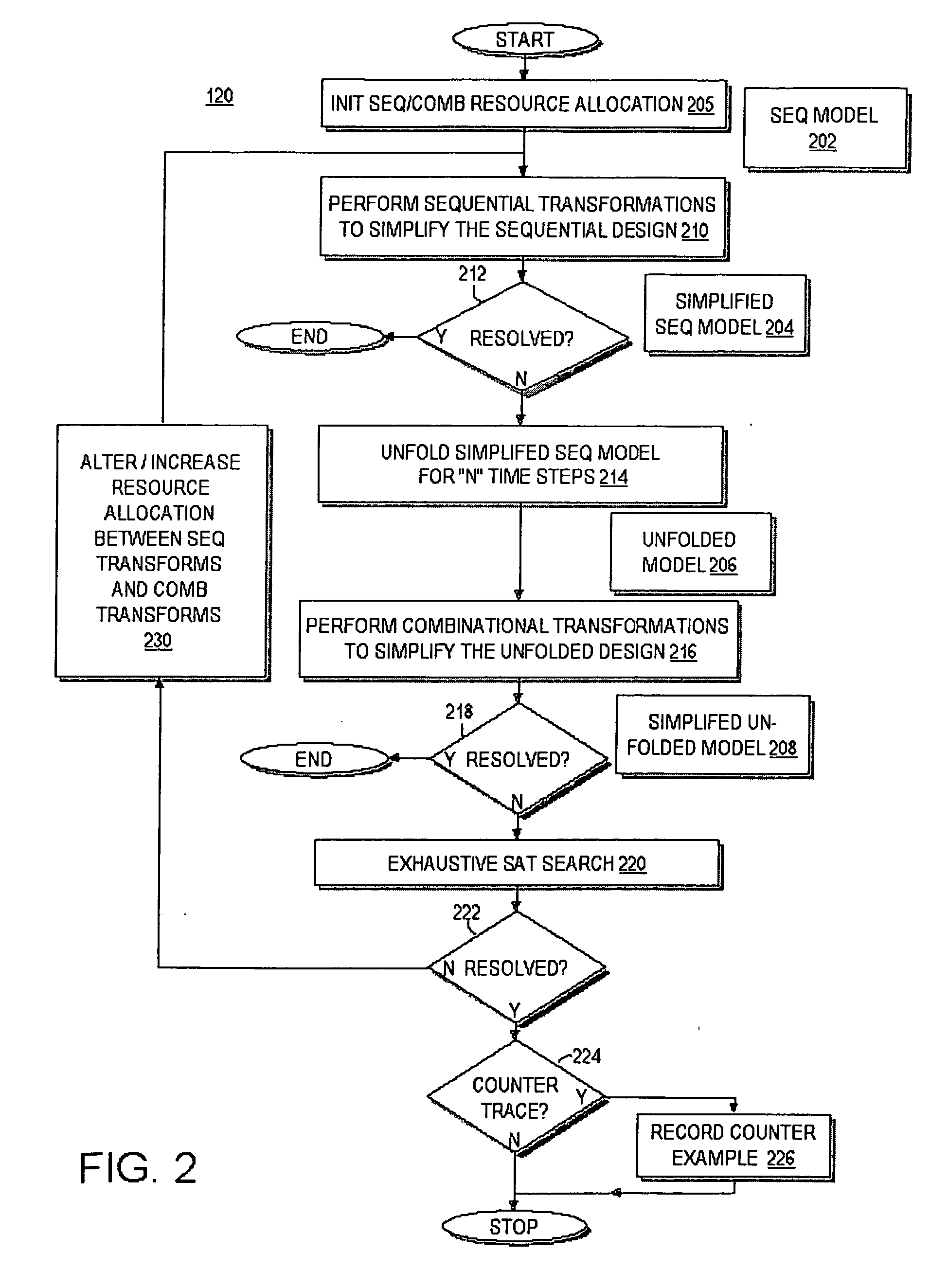Design verification using sequential and combinational transformations
a design verification and combinational transformation technology, applied in computer aided design, program control, instruments, etc., can solve the problems of enormous verification challenge, exponential time and/or memory resources consumed, and large number of integrated circuit registers, etc., and achieve the effect of simplifying the unfolded model
- Summary
- Abstract
- Description
- Claims
- Application Information
AI Technical Summary
Benefits of technology
Problems solved by technology
Method used
Image
Examples
Embodiment Construction
[0013] Generally speaking the described embodiment encompasses a system, method, and software for resolving a verification problem. The verification problem is most likely associated with a large scale integrated circuit. The system integrates a variety of verification tools in a prescribed manner to resolve the verification problem efficiently.
[0014] A sequence of one or more transformations are performed on a sequential model of the design to simplify the sequential model to the greatest extent possible. Assuming that the verification problem remains unresolved after sequential transformation, the simplified sequential model is “unfolded” for N time steps to create a combinational model of the design. Combinational transformations are then performed to simplify / verify the unfolded model.
[0015] If the combinational transformations fail to resolve the verification problem, an exhaustive satisfiability search is performed on the model. If the satisfiability search resolves the veri...
PUM
 Login to View More
Login to View More Abstract
Description
Claims
Application Information
 Login to View More
Login to View More - R&D
- Intellectual Property
- Life Sciences
- Materials
- Tech Scout
- Unparalleled Data Quality
- Higher Quality Content
- 60% Fewer Hallucinations
Browse by: Latest US Patents, China's latest patents, Technical Efficacy Thesaurus, Application Domain, Technology Topic, Popular Technical Reports.
© 2025 PatSnap. All rights reserved.Legal|Privacy policy|Modern Slavery Act Transparency Statement|Sitemap|About US| Contact US: help@patsnap.com



